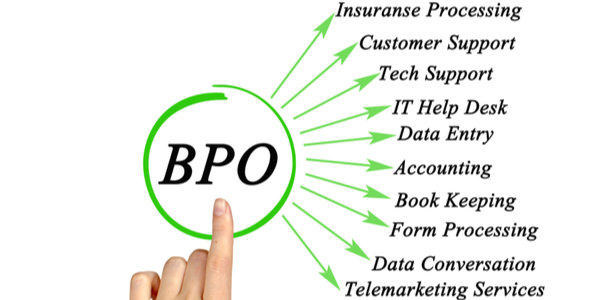In the dynamic realm of insurance, first impressions are lasting and pivotal to long-term success. The process of onboarding clients into your insurance ecosystem can make or break your relationship with them. An efficient, client-centric onboarding experience ensures client retention and bolsters overall satisfaction. Beyond these immediate benefits, it also plays a crucial role in optimizing operational efficiency and navigating the complex web of regulatory requirements.
This comprehensive guide is your roadmap to mastering the art of insurance client onboarding. We’ll take you through every facet of the process, from initial preparation to real-world success stories. Whether you’re an established insurance provider seeking to revamp your onboarding approach or a newcomer aiming to set industry standards, this guide will equip you with the knowledge and tools necessary to streamline the onboarding journey for your clients and your organization.
Join us on this journey as we explore the core components of client onboarding, delve into best practices, and examine real-world case studies of insurance companies that have transformed their onboarding processes. Get ready to embark on a transformational journey that will empower you to elevate your insurance client onboarding to new heights of excellence.
The Core of Onboarding – Initial Preparation
Defining Clear Objectives and Goals
Effective insurance client onboarding begins with a crystal-clear vision of what you want to achieve. By defining specific objectives and setting measurable goals, you lay the foundation for a successful onboarding process. Here’s how you can go about it:
Setting Specific Onboarding Objectives
Begin by identifying the primary objectives of your client onboarding process. These objectives should align with your broader business goals and may include:
- Reducing onboarding time
- Enhancing client satisfaction
- Ensuring regulatory compliance
- Maximizing cross-selling and upselling opportunities
Having clear objectives not only provides focus but also serves as a reference point for evaluating the success of your onboarding efforts.
Establishing Measurable Key Performance Indicators (KPIs)
Once you’ve defined your objectives, it’s essential to establish key performance indicators (KPIs) that are quantifiable and can be tracked over time. Examples of KPIs related to insurance client onboarding include:
- Average onboarding time
- Client satisfaction scores
- Regulatory compliance rates
- Percentage of cross-sold or upsold policies
These KPIs will help you measure your onboarding process’s effectiveness and identify improvement areas.
Assembling the Right Onboarding Team
Your onboarding team plays a pivotal role in shaping the client experience. It’s essential to assemble a team with the right mix of skills and expertise to ensure a seamless onboarding process:
Identifying Key Team Members
Start by identifying the key individuals who will be part of your onboarding team. This typically includes:
- Onboarding managers
- Customer service representatives
- Compliance officers
- IT professionals
- Data analysts
Each member should bring a unique skill set to the table to cover various aspects of the onboarding process.
Roles and Responsibilities
With your team in place, defining clear roles and responsibilities for each member is crucial. Ambiguity can lead to inefficiencies and errors. Here’s how to ensure clarity:
Assigning Roles Within the Onboarding Team
- Onboarding Managers: Responsible for overseeing the entire onboarding process, setting timelines, and ensuring compliance.
- Customer Service Representatives: Act as clients’ primary point of contact, guiding them through the onboarding journey and addressing their queries.
- Compliance Officers: Ensure all onboarding processes adhere to regulatory requirements and conduct necessary checks.
- IT Professionals: Handle the technical aspects of onboarding, including managing digital forms, e-signatures, and data security.
- Data Analysts: Analyze client data for insights that can improve the onboarding process and personalization.
Budget Allocation
Effectively managing your budget is a critical aspect of successful onboarding. Here’s how to determine and allocate your budget wisely:
Determining the Budget for a Successful Onboarding Process
- Assess the resources required for each component of the onboarding process, including technology, personnel, and training.
- Consider the costs associated with software solutions, automation tools, and data security measures.
- Allocate a portion of the budget for ongoing training and development to equip your team with the latest knowledge and skills.
Data Collection and Documentation
Gathering Essential Client Information
The heart of a successful insurance client onboarding process lies in gathering comprehensive and accurate client information. This critical step ensures that you have the data necessary to tailor insurance offerings to your clients’ needs and lays the groundwork for a trusting and transparent relationship.
Collecting Pertinent Client Data
The data collection process should encompass a wide range of client information, including but not limited to:
- Personal Details: This includes names, addresses, contact information, and date of birth.
- Insurance Needs and Preferences: Understanding your client’s insurance requirements, including coverage type, limits, deductibles, and any specific preferences, is vital. This information serves as the basis for recommending suitable policies.
- Financial Information: In some cases, financial data may be required to assess a client’s ability to pay premiums. This may include income, assets, and liabilities.
- Health Information: For health insurance, collecting data on pre-existing conditions, medical history, and lifestyle habits may be necessary.
- Beneficiary Information: If applicable, gather details about beneficiaries, including their names and relationships to the policyholder.
It’s essential to balance obtaining the necessary information for underwriting purposes and respecting clients’ privacy and data security concerns.
Digitalization of Data Collection
Transitioning from paper-based processes to digital data collection is a significant step in modernizing insurance client onboarding. Embracing digitalization offers several advantages:
Transitioning to Digital Forms and Processes
- Speed and Efficiency: Digital forms can be completed more quickly than paper forms, reducing the time required for onboarding.
- Error Reduction: Manual data entry errors are minimized, leading to higher data accuracy.
- Convenience: Clients can complete forms online from the comfort of their homes, eliminating the need for in-person visits.
- Data Security: Digital data collection allows for encryption and secure storage of sensitive information, mitigating the risk of data breaches.
The move to digital forms and processes benefits the insurance provider and enhances the overall client experience.
Compliance with Data Privacy Regulations
In today’s regulatory landscape, safeguarding client data is paramount. Insurance providers must comply with data privacy regulations such as the General Data Protection Regulation (GDPR) and the California Consumer Privacy Act (CCPA). Here’s how to ensure compliance:
Adhering to Data Privacy Laws and Regulations
Data Protection Policies: Develop and implement robust data protection policies and practices to safeguard client information.
- Consent: Obtain clear and informed consent from clients for data collection and processing.
- Data Access and Portability: Allow clients to access and, if necessary, port their data as regulations require.
- Data Security Measures: Implement encryption, access controls, and regular security audits to protect client data.
- Data Retention Policies: Establish clear data retention and deletion policies to ensure compliance with regulatory requirements.
Compliance with data privacy regulations avoids legal consequences and builds trust with clients who entrust their personal information to your organization.
Conclusion
From the initial preparations, where clear objectives, the right team, defined roles, and budget allocation are paramount, to the critical phase of data collection and documentation, which involves the careful handling of sensitive client information while ensuring compliance with stringent data privacy regulations—we’ve covered the essential building blocks of a streamlined onboarding process.
But what if there was a partner who could guide you through this journey, providing not just insights but practical solutions to streamline your insurance processes and amplify your efficiency? Enter Insurance Backoffice Pro—your trusted ally in the insurance industry. With a wealth of experience and expertise, Insurance Backoffice Pro is poised to assist you in every step of your insurance client onboarding process. From data collection and documentation to automated solutions, compliance management, and staff training, we offer a comprehensive suite of services designed to elevate your operations.







